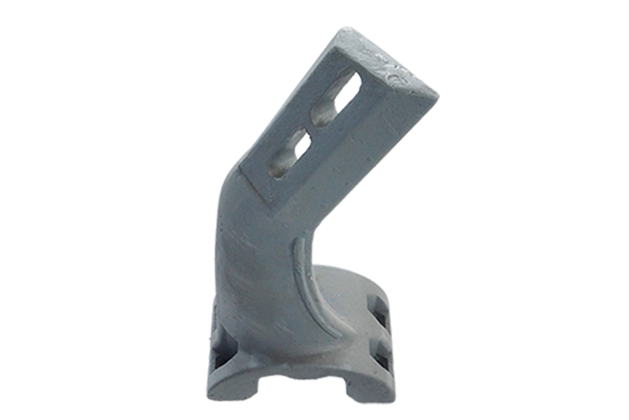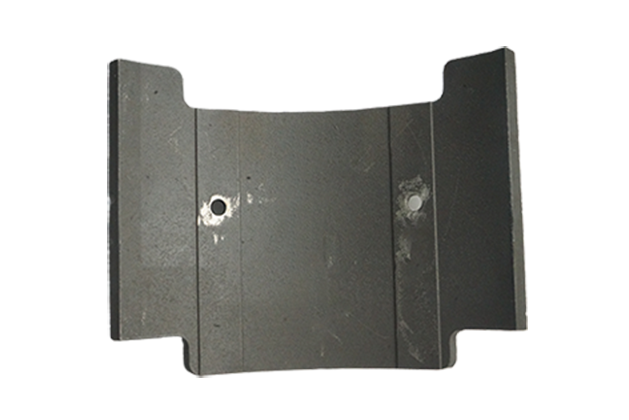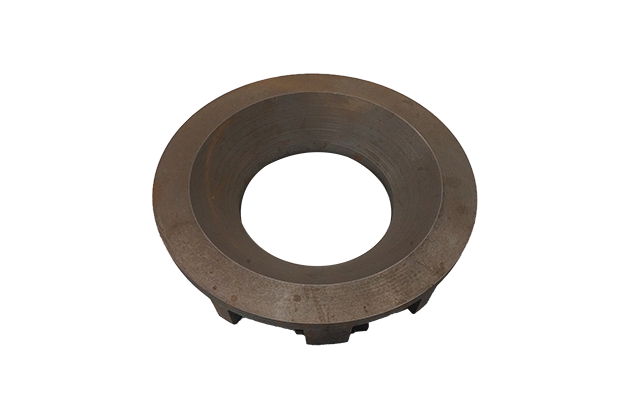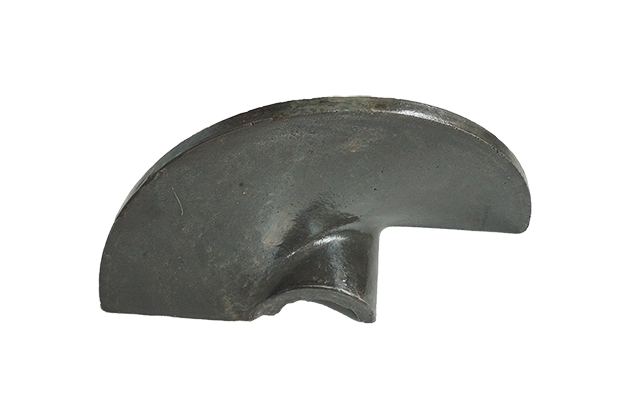Asphalt mixing plants rely heavily on Asphalt Mixing Plant Wear Parts to operate efficiently. These components are subjected to constant friction, heat, and pressure during operation, making them susceptible to wear over time. For instance, mixer blades and arms, which are often constructed from chromium or Ni-Cr alloys, typically endure up to 200,000 uses due to their impressive hardness rating of 68 HRC. However, if the blades become worn, it can result in uneven asphalt quality and potential equipment damage. Conducting regular maintenance checks is essential to prevent these issues and ensure proper mixing. Ignoring the condition of wear parts can also lead to overheating, which diminishes the plant's overall efficiency. By recognizing the importance of these critical Asphalt Mixing Plant Wear Parts, you can prolong their lifespan and maintain consistent performance.

Asphalt mixing plants mixing blades and arms play a vital role in the asphalt mixing process. These components ensure that aggregates, bitumen, and fillers blend evenly to produce high-quality asphalt. The blades rotate within the mixing drum, creating a consistent and homogenous mixture. Without properly functioning blades and arms, the asphalt may develop uneven textures or fail to meet quality standards. Their precise design and material composition allow them to withstand the intense friction and heat generated during mixing. By maintaining these parts in good condition, you can ensure the plant operates efficiently and delivers consistent results.
Mixing blades and arms face constant exposure to abrasive materials, leading to gradual wear. Over time, the edges of the blades may become dull, reducing their ability to mix materials effectively. Cracks or chips can also develop due to prolonged use or improper handling. These issues often result in uneven mixing, which can compromise the quality of the asphalt. Additionally, worn blades and arms may place extra strain on the motor, increasing energy consumption and operational costs. Recognizing these signs early can help you avoid costly repairs or downtime.
Regular maintenance is essential to extend the lifespan of mixing blades and arms. Inspect these components frequently for signs of wear, such as dull edges, cracks, or deformation. Clean the blades after each use to remove any buildup of asphalt or debris. Lubricate the moving parts to reduce friction and prevent overheating. When replacement becomes necessary, choose high-quality Asphalt Mixing Plant Wear Parts made from durable materials like chromium or Ni-Cr alloys. These materials offer excellent resistance to wear and heat, ensuring long-term performance. Always follow the manufacturer’s guidelines for installation and maintenance to maximize efficiency.

Liners serve as a protective barrier inside the mixing drum, shielding it from the abrasive action of aggregates and other materials. Without liners, the drum would wear out quickly due to constant friction and impact. These components absorb the brunt of the wear, ensuring the drum remains intact and functional for longer periods. High-quality liners are crafted from materials designed to withstand extreme conditions. Common options include:
Hardened Steel: Offers excellent wear and abrasion resistance.
Heat-Resistant Alloys: Prevent premature deterioration under high temperatures.
Corrosion-Resistant Coatings: Protect against moisture and chemical damage.
By using durable liners, you can reduce maintenance costs and extend the lifespan of your asphalt mixing plant.
Recognizing liner wear early can save you from costly repairs. Look for visible signs of damage, such as thinning or uneven surfaces. Erratic material blending is another red flag, as it often indicates internal issues caused by liner degradation. If you notice inconsistent asphalt quality or increased energy consumption, inspect the liners immediately. Regular checks help you catch these problems before they escalate.
To maximize the lifespan of your liners, adopt proactive maintenance practices. Clean the mixing drum regularly to prevent material buildup, which accelerates wear. Inspect the liners frequently for damage and replace them as needed. Choose high-quality Asphalt Mixing Plant Wear Parts made from wear-resistant materials to ensure durability. Avoid overloading the drum, as excessive weight can strain the liners and reduce their effectiveness. By following these steps, you can keep your liners in top condition and maintain efficient plant operations.

The sealing element plays a critical role in preventing leaks and maintaining pressure within your asphalt mixing plant. It ensures that materials like bitumen and aggregates stay contained during the mixing process. Without a properly functioning seal, you risk material loss, contamination, and reduced efficiency. Sealing elements also protect internal components from dust, moisture, and debris, which can cause premature wear. By keeping the system airtight, they help maintain consistent performance and extend the lifespan of your equipment. A well-maintained sealing element is essential for ensuring smooth operations and minimizing downtime.
Sealing elements face constant exposure to high temperatures, pressure, and abrasive materials. Over time, these conditions can cause seals to crack, harden, or lose elasticity. Worn seals often lead to leaks, which can disrupt the mixing process and compromise asphalt quality. Contamination is another common issue. Dust and debris can accumulate around the seal, accelerating wear and reducing its effectiveness. Improper installation or misalignment can also cause seals to fail prematurely. Identifying these problems early helps you avoid costly repairs and maintain optimal plant performance.
Proper care of sealing elements ensures their longevity and reliability. Follow these maintenance practices to keep them in top condition:
Install seals correctly to prevent early failures.
Inspect them regularly for cracks, hardening, or other signs of wear.
Clean the seals and surrounding areas to avoid contamination.
Check lubrication levels frequently to prevent seal failure.
Control operating temperatures to reduce degradation.
Adjust speed and load to minimize stress on the seals.
Replace worn seals immediately to prevent leaks and further damage.
By adopting these practices, you can extend the lifespan of your sealing elements and maintain the efficiency of your asphalt mixing plant. Investing in high-quality Asphalt Mixing Plant Wear Parts ensures better durability and performance, reducing the need for frequent replacements.

The scraper is a crucial component in asphalt mixing plants. It ensures that materials like aggregates and bitumen are evenly distributed across the mixing drum or conveyor. By scraping residual material from the drum’s surface, it prevents buildup that could disrupt the mixing process. This action helps maintain a consistent blend, ensuring the final asphalt product meets quality standards. Without a properly functioning scraper, leftover material can harden, leading to inefficiencies and potential damage to other components.
Scrapers endure constant friction and contact with abrasive materials. Over time, this exposure causes wear, reducing their ability to clean surfaces effectively. A worn scraper leaves behind residue, which can mix unevenly with fresh materials. This inconsistency affects the quality of the asphalt and increases the risk of clogs or blockages. Additionally, worn scrapers force other components, like the mixing blades, to work harder, leading to higher energy consumption and faster wear on those parts. Addressing scraper wear promptly helps you avoid these cascading issues.
Regular inspections are essential to identify when a scraper needs replacement. Look for signs of thinning, cracks, or uneven edges. If the scraper no longer makes full contact with the drum or conveyor, it’s time to replace it. Always choose high-quality replacements designed for your specific plant model. Opt for durable materials that can withstand high temperatures and abrasive conditions. When installing a new scraper, ensure proper alignment to maximize its effectiveness. Routine maintenance, such as cleaning and lubrication, can also extend the lifespan of this critical part. By prioritizing scraper upkeep, you can maintain the efficiency of your asphalt mixing plant and reduce downtime.
Conveyor belts play a vital role in moving materials efficiently within an asphalt mixing plant. They ensure a smooth flow of aggregates and other components through different stages of production. Each type of conveyor serves a specific purpose:
Feeder Conveyors control the flow of aggregates from the feed bin system to the collector conveyor. Variable speed belts help manage proportions accurately.
Collecting Conveyors gather the aggregates from feeder conveyors and transport them at a steady pace to the charging conveyor.
Charging Conveyors carry the combined aggregate mixture to the mixing drum. These belts adjust their speed based on the volume of materials coming from cold feed bins and RAP bins.
By maintaining proper functionality, conveyor belts ensure consistent material transport, which is essential for producing high-quality asphalt.
Conveyor belts face several wear challenges that can disrupt operations. Common issues include:
Improper tracking, which can cause significant damage and lead to costly repairs.
Excessive wear on components like troughing rollers and belting.
Damage to conveyor parts, resulting in production delays and increased maintenance needs.
These challenges often arise from constant exposure to abrasive materials and heavy loads. Addressing these problems promptly can prevent downtime and maintain the efficiency of your plant.
Regular maintenance is key to extending the lifespan of conveyor belts. Follow these tips to keep them in optimal condition:
Monitor belts for alignment issues or visible signs of damage.
Inspect components such as troughing rollers, return rollers, and belting for wear, damage, or material buildup.
Examine the bearings and drive system for abnormalities.
By staying proactive, you can reduce the risk of unexpected failures and ensure smooth material transport. High-quality Asphalt Mixing Plant Wear Parts, including durable conveyor belts, can further enhance the reliability of your equipment.
Regular monitoring and maintenance of wear parts like mixing blades, liners, sealing elements, scrapers, and conveyor belts are essential for keeping your asphalt mixing plant running efficiently. Neglecting these components can lead to costly breakdowns and production delays. High-quality wear parts, such as those from Haitian Heavy Industry, offer long-term benefits:
Lower Maintenance Costs: Durable materials reduce the frequency of failures and repairs.
Minimized Downtime: Reliable parts ensure continuous operation, maximizing productivity.
Extended Equipment Lifespan: Investing in premium components delays expensive refurbishments.
By prioritizing maintenance, you can enhance plant performance, reduce operational costs, and achieve consistent asphalt quality.
Look for thinning, cracks, or uneven surfaces on components like blades, liners, and scrapers. Increased energy consumption, inconsistent asphalt quality, or unusual noises during operation also indicate wear.
Inspect wear parts weekly or after every 200 hours of operation. Regular checks help you identify damage early and prevent costly breakdowns.
Yes, low-quality parts wear out faster and cause uneven mixing, leaks, or material buildup. This reduces efficiency, increases downtime, and raises maintenance costs.
Clean components regularly, avoid overloading the plant, and follow the manufacturer’s maintenance guidelines. Use high-quality, heat-resistant materials for replacements.
Delaying replacement can lead to equipment damage, uneven asphalt production, and higher operational costs. Replacing worn parts promptly ensures consistent performance and prevents downtime.